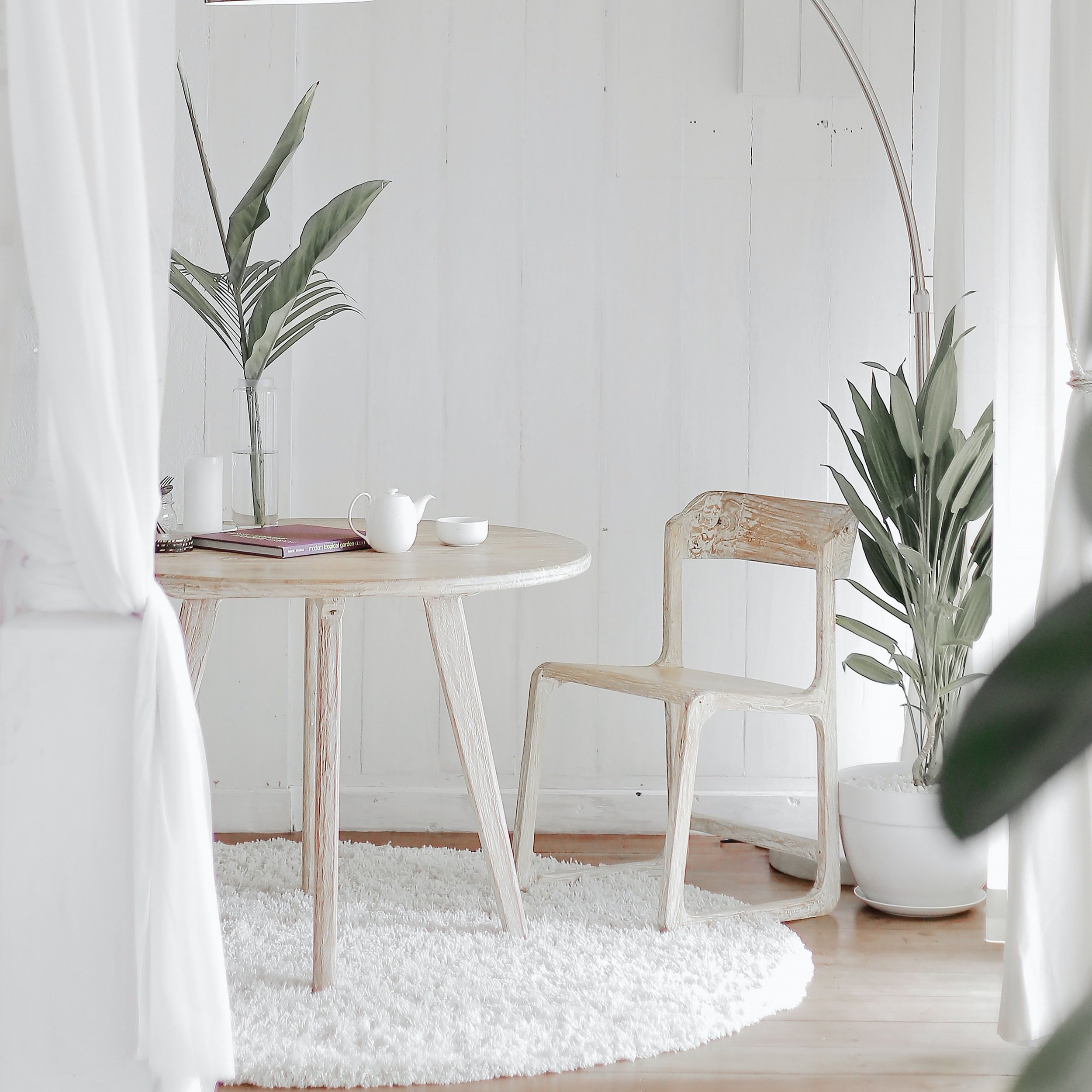2023's Hottest Interior Design Styles to Watch For
Are you looking for inspiration and ideas to spruce up your home in 2023? As we stepped into this new year, it's time to start thinking about the hottest interior design styles to watch for. Whether you're a lover of Japandi style, minimalist at heart, or a tech-savvy homeowner, there's something for everyone in this comprehensive guide. In this article, we'll be highlighting five of the most popular interior design styles that are expected to take center stage in 2023 and provide helpful tips to incorporate these styles into your own home. So, let's dive in and explore!
Style 1: Japandi Style
Japandi style is a design style that combines the best of Japanese and Scandinavian design elements, resulting in a harmonious blend of simplicity, functionality, and natural beauty. This style is characterised by a neutral colour palette, clean lines, natural materials and a focus on simplicity and balance.
Here are some tips for incorporating Japandi style into your home:
Create a neutral colour palette: Japandi style is known for its neutral colour palette, including whites, greys, and beiges. Use these colours as the foundation for your home decor, and add in a few pops of colour for visual interest.
Use natural materials: Both Japanese and Scandinavian designs emphasize the use of natural materials, such as wood, stone, and cotton. Incorporate these materials into your decor for a warm, inviting feel.
Incorporate traditional elements: Japandi style is a fusion of two cultures, so look for traditional Japanese elements, such as Shoji screens, and Scandinavian elements, such as woollen textiles, to incorporate into your decor.
Inspiration for Japandi-inspired home design ideas include:
A neutral-coloured living room with a minimalist, low-profile sofa and simple, functional furniture
A kitchen with natural wood cabinetry and neutral-coloured countertops
A bedroom with a neutral colour palette, natural wood headboard, and woollen textiles
If you're looking to create a peaceful, calming home environment, consider incorporating the Japandi trend into your interior design. This fusion of Japanese and Scandinavian design elements is the perfect blend of simplicity, functionality, and natural beauty.
Style 2: Minimalism
Minimalism continues to be a popular style in home design, as more and more people are seeking a calming, clutter-free environment. The minimalist aesthetic is characterised by uncluttered negative spaces and a focus on functionality.
Here are some tips for creating a minimalist home:
Declutter: Start by removing anything that you no longer need or use. This will help you focus on the things that are most important to you and create a sense of calm in your space.
Embrace negative space: Negative space, or the empty space around and between objects, is an important part of minimalism. Try to create open, uncluttered areas in your home, and don't be afraid of empty walls or large, blank spaces.
Focus on functionality: Minimalism is all about focusing on the essentials, so make sure that your home is functional and that you have everything you need.
For inspiration, check out minimalist home design projects that incorporate these principles. Whether you're looking to create a soothing bedroom retreat or a sleek, modern living room, minimalism can help you achieve a calm, uncluttered space that is both functional and beautiful.
Style 3: Monochromatic Palettes
The trend towards using monochromatic colour schemes in home decor is all about creating a serene, cohesive look in your home. By sticking to a single colour family, you can create a calm, harmonious space that feels both sophisticated and timeless.
Here are some tips for creating a monochromatic colour palette in your home:
Choose your base colour: Start by choosing a base colour that you love and want to build your palette around. This could be a bold, statement-making shade or a soft, muted tone.
Vary the intensity: To add depth and interest to your monochromatic palette, vary the intensity of your chosen colour. Use lighter and darker shades of the same colour to create a layered, nuanced look.
Add texture: To add texture and interest to a monochromatic palette, incorporate different textures and materials, such as velvet, wool, and metal.
Inspiration for monochromatic home design projects include:
A living room with a deep blue monochromatic palette, featuring a plush velvet sofa and metallic accents.
A kitchen with a soft, muted green monochromatic palette, featuring tile backsplashes and natural wood cabinetry.
A bedroom with a bold, black monochromatic palette, featuring a dramatic four-poster bed and plush velvet bedding.
By using a monochromatic colour palette in your home decor, you can create a serene, harmonious space that feels both sophisticated and timeless. So, consider incorporating this trend into your interior design for a calm and cohesive look.
Style 4: Smart Homes
The trend towards incorporating smart technology into home design has been gaining popularity in recent years, as homeowners look for ways to make their homes more efficient, convenient, and secure. Whether you're looking to control your lighting, heating, and cooling from your smartphone, or you want to monitor your home when you're away, there are many different smart home solutions available to suit your needs.
Here are some tips for creating a Smart Home:
Choose energy-efficient appliances and lighting to save on energy costs and reduce your environmental impact.
Automate your lighting to turn off lights when you leave the room, or to switch them on when you enter. This not only saves energy but also provides a convenient, hands-free way to control your lighting.
Invest in a home security system to keep your home and family safe. Consider features such as remote monitoring, motion detection, and video surveillance to give you peace of mind when you're away.
Consider the compatibility of different smart home products before you buy. Look for products that use a common platform, such as Amazon Alexa or Google Home, to ensure that they can work together seamlessly.
Inspiration for Smart Home Design Projects:
Create a smart home office to make the most of your workspace. Consider features such as automated lighting and a motorized standing desk to optimize your work environment.
Design a smart bedroom to enhance your sleep and relaxation. Consider features such as smart lighting, temperature control, and blackout curtains to create the perfect sleep environment.
Smart home technology offers homeowners a wide range of benefits, from increased convenience and energy efficiency, to enhanced security and peace of mind. Whether you're a tech-savvy homeowner or a beginner, there are many smart home solutions available to suit your needs and budget.
Style 5: Interior Design for Small Spaces
Small spaces present unique design challenges, but also offer opportunities for creative solutions. With the rise of tiny homes, micro-apartments, and urban living, maximising space has become a top priority for many homeowners.
Here are some tips and inspiration for designing small spaces:
Use Mirrors: Mirrors can help make a small room feel more spacious and create the illusion of depth. Consider placing a large mirror opposite a window to reflect natural light and increase the perception of space.
Light Colours: Using light colours on walls and ceilings can help create a bright, airy atmosphere in a small space and make a space feel more open and spacious.
Multi-functional Furniture: When space is at a premium, multi-functional furniture is a must. Look for pieces that serve multiple purposes, such as a bed with built-in storage, or a coffee table that doubles as a seating option.
Vertical Storage: Incorporate tall shelves or install wall-mounted storage units. This helps to keep floors clear and make the most of every inch of space.
Interior design for small spaces can seem like a challenge, but with the right approach and some creative solutions, you can transform your home into a comfortable and stylish living space. By utilising the tips outlined above, you can turn your small space into a comfortable, inviting home that feels larger than it actually is.
Worried about overpaying for your home renovation?
Let AI be your superhero!
IDIT® Savings - AI Renovation Cost Saver
With this FREE innovative AI tool, you can scan renovation quotes with ease and identify cost-saving measures that won't compromise on quality.
You can now enjoy a successful renovation with additional savings from the savings report.
Conclusion
We hope that this guide has given you some inspiration and ideas for your new home journey. If you're feeling overwhelmed or unsure about where to begin, start small. Pick one style that speaks to you and incorporate it into your space in a way that feels natural and comfortable. Whether it's incorporating some Japandi-inspired decor, decluttering and simplifying your home for a minimalist feel, or investing in some smart home technology, even small changes can make a big impact.
Remember that your home is a constant work in progress, it will evolve and change over time as your needs and tastes do. So, don’t be stress about getting it perfect. The most important thing is to create a space that feels like home to you. So, take these style and make them your own by adding your personal touch. We hope you enjoy your new home and have fun making it your own!







